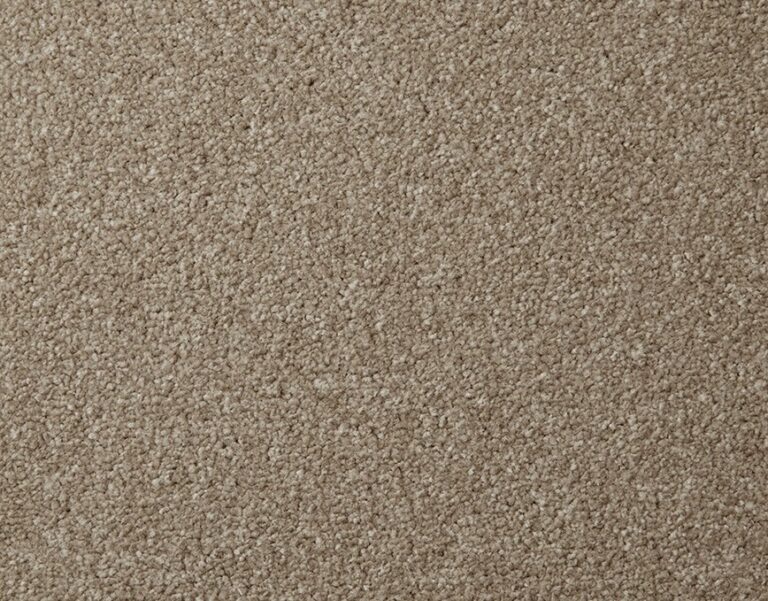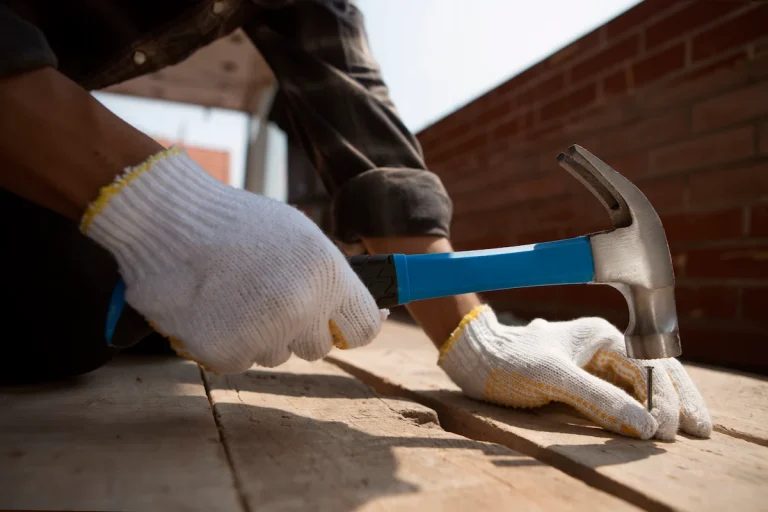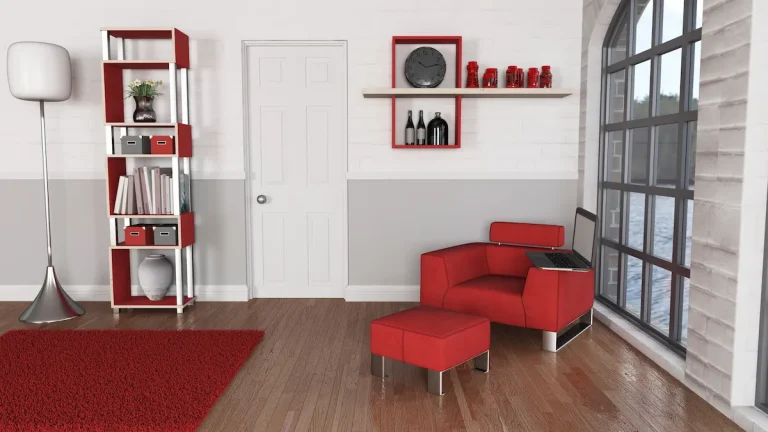When selecting flooring for a residence, warmth and comfort frequently emerge as paramount considerations, especially when considering the range of flooring materials available, such as engineered wood, laminate, ceramic tile, and natural stone.
This discussion aims to explore the debate surrounding the question: Is vinyl flooring warmer than carpet? We will analyse the characteristics of each option, including their various types, materials, and insulation properties, along with factors like underfloor heating and energy efficiency.
By examining the factors that influence warmth, energy efficiency, and heating expenditures, individuals will gain valuable insights to inform their decision-making process in alignment with their lifestyle and preferences. We invite you to join us as we reveal the distinctions between these two popular flooring choices, including the potential role of area rugs and underlay.
Is Vinyl Flooring Warmer Than Carpet?
When evaluating interior design options for residential spaces, it is essential to assess the temperature and comfort offered by various flooring materials, particularly in comparing the warmth of vinyl flooring to that of carpeting.
As winter approaches, factors such as insulation and heating systems significantly influence the overall warmth of a living environment. With a focus on energy efficiency, homeowners are increasingly considering alternatives that allow them to maintain a comfortable atmosphere while balancing both comfort and cost-effectiveness.
What Is Vinyl Flooring?
Vinyl flooring stands out as a versatile and eco-conscious flooring material that has gained significant popularity in contemporary interior design, primarily due to its affordability, diverse styles, and ease of maintenance. This synthetic product is composed of polyvinyl chloride (PVC) and is available in a wide range of designs, enabling homeowners to achieve an aesthetically pleasing environment while enjoying practical advantages.
The innovative construction of vinyl flooring allows it to closely mimic the appearance of natural materials, such as hardwood and stone, making it a desirable option for various interior settings. The manufacturing process frequently incorporates recyclable materials, thereby fostering a more sustainable approach to home improvement.
Key benefits of vinyl flooring include:
- Enhanced durability, which renders it resistant to scratches, stains, and moisture.
- Budget-friendly pricing, offering homeowners an attractive design solution without excessive expenditure.
- An extensive selection of styles, ranging from traditional patterns to contemporary aesthetics, catering to diverse tastes and allowing for personal expression in flooring choices.
For individuals who prioritize eco-friendliness, vinyl flooring not only presents an economical option but also contributes to a reduced environmental impact and improved energy efficiency, solidifying its status as a responsible choice for modern living.
What Are The Different Types Of Vinyl Flooring?
Vinyl flooring is available in several types, each providing distinct styles and patterns to accommodate various aesthetic preferences and functional requirements. The primary types include luxury vinyl tiles (LVT), vinyl sheets, and vinyl planks, all of which can effectively imitate the appearance of other materials such as engineered wood and laminate, whilst also offering superior moisture resistance.
Each type presents its own set of advantages. Luxury vinyl tiles (LVT) are particularly noted for their realistic appearance and come in a wide range of styles, from natural stone to intricate wood grain designs. Their durability renders them suitable for high-traffic areas, such as living rooms and commercial spaces.
- Vinyl sheets are available in a continuous piece, which minimises seams and enhances their effectiveness in moisture-prone areas, such as bathrooms and kitchens.
- Vinyl planks replicate the appearance of hardwood flooring while being more cost-effective and easier to install, making them an excellent choice for DIY enthusiasts.
In comparison to engineered wood and laminate, vinyl flooring is distinguished by its superior water resistance and ease of maintenance, thereby making it a versatile option for both homeowners and businesses.
What Is Carpet?
Carpet is a widely recognised flooring option distinguished by its soft fibres and its ability to enhance the comfort and warmth of any room, making it a preferred choice in various home interior designs.
Often sought after for its remarkable versatility, carpets can be customised to meet diverse aesthetic preferences and functional requirements. The design flexibility of carpets enables homeowners and designers to create unique environments that can either unify a space or serve as a striking focal point.
Materials such as wool, renowned for its durability and luxurious texture, along with various synthetic fibres, provide multiple options for both texture and resilience.
- Carpets made from soft fibres additionally offer improved insulation, helping to maintain comfortable temperatures.
- The extensive range of patterns and colours available in the market ensures that there is an option to complement every style, whether traditional, contemporary, or eclectic.
Area rugs play a crucial role in defining spaces within larger rooms, serving as stylish overlays that enhance both comfort and visual appeal.
What Are The Different Types Of Carpet?
There exists a wide variety of carpets in the market, each presenting distinct styles, patterns, and levels of comfort to accommodate diverse consumer preferences and functional requirements.
Common types include plush, Berber, and frieze carpets, with wool carpets being especially valued for their natural insulating properties and luxurious texture. A thorough understanding of the unique characteristics of each carpet type enables homeowners to make informed decisions tailored to their specific environments.
- Plush carpets offer a soft, velvety texture, rendering them ideal for bedrooms and living areas where comfort is paramount.
- Berber carpets are characterised by looped fibres that enhance their durability, making them suitable for high-traffic areas such as hallways and offices.
- Frieze carpets feature a twisted, textured appearance, providing both a casual aesthetic and significant resilience against wear.
Wool carpets are particularly notable for their environmental benefits and their capacity to naturally regulate temperature, ensuring warmth during winter and coolness in summer. This versatility makes them an excellent choice for a variety of settings.
What Are The Factors That Affect Warmth?
Several factors significantly impact the thermal properties of flooring materials, such as vinyl and carpet, which in turn affect overall comfort and energy efficiency within a home.
Important considerations include the composition of the material, its thickness, and its insulation properties, as well as the effectiveness of any heating systems installed, particularly during the colder winter months.
Material
The choice of flooring material is crucial in determining the warmth of a space, as each option presents distinct thermal properties.
When examining various flooring materials, it becomes evident that different selections can profoundly influence the overall cosiness of an environment.
Natural fibres, such as wool and cotton, offer superior insulating capabilities and effectively retain heat, contributing to a warm and inviting atmosphere. In contrast, synthetic materials, such as polyester, while often more economical, generally do not provide the same level of insulation.
- Wool carpets, for example, contain air pockets that trap heat, resulting in a comfortable surface underfoot.
- Conversely, vinyl flooring, which is designed to imitate natural materials, may feature thermal backing to enhance warmth.
In making flooring selections, careful consideration of these properties can lead to a more efficient and comfortable living space.
Thickness
The thickness of flooring materials significantly affects their insulation properties and thermal performance, with thicker configurations typically offering enhanced resistance to heat loss. For instance, carpets usually possess higher tog ratings, which indicate superior insulation capabilities, compared to thinner vinyl flooring alternatives.
When selecting flooring, it is imperative to consider the relationship between thickness and overall comfort and efficiency. The connection between tog ratings and warmth becomes apparent when assessing various materials. A thicker carpet, for example, inherently traps more air, thereby improving its insulating properties, which allows it to maintain a room’s warmth during colder months. Conversely, thinner options may not effectively sustain comfortable temperatures, potentially resulting in increased energy costs as heating systems must operate more intensively to compensate for heat loss.
Among the available flooring options:
- Carpets provide effective thermal barriers.
- Laminate offers moderate insulation.
- Tiles generally deliver the least warmth.
Investing in materials with adequate thickness can significantly enhance comfort, assist in regulating room temperature, and ultimately contribute to a more inviting living environment.
Insulation
Insulation is a crucial component in maintaining warmth in flooring, significantly impacting the efficiency of heating systems within residential settings.
Effective insulation strategies can considerably reduce energy consumption, thereby enhancing the overall comfort of living spaces. Various materials, including fibreglass, foam board, and spray foam, play an essential role in improving warmth retention.
- Fibreglass offers excellent thermal resistance and is commonly utilised in lofts and walls.
- Foam board insulation is particularly well-suited for basement walls, providing an additional layer of thermal protection against cold concrete.
- Although spray foam may be slightly more expensive, it provides superior air sealing capabilities, which can greatly enhance heating efficiency.
Understanding the different insulation methods and their specific applications enables homeowners to make informed decisions. Investing in proper insulation not only fosters a comfortable living environment but also leads to significant long-term savings on heating costs. Using area rugs can also contribute to enhanced insulation and energy efficiency in various rooms.
Which Is Warmer: Vinyl Flooring Or Carpet?
When assessing whether vinyl flooring or carpet provides greater warmth, it is essential to consider various factors, including material properties, thickness, and insulation capabilities. The choice between these types is influenced by how well each can prevent draughts and maintain cosy environments during the winter months.
Generally, carpet is recognised for its superior warmth and comfort, owing to its soft fibres and inherent insulating qualities. However, certain varieties of vinyl flooring are specifically engineered to enhance comfort levels, particularly when supplemented with appropriate underlay.
Vinyl Flooring
Vinyl flooring, although often regarded as less warm than carpet, can create a comfortable environment when properly insulated and installed. Recent advancements in design have led to a variety of options that enhance warmth, including thicker planks and alternatives compatible with underfloor heating systems.
Modern vinyl flooring features improved thermal properties that can significantly elevate comfort levels in both residential and commercial settings. These enhancements are not merely aesthetic; they also integrate innovative insulation technologies that assist in temperature regulation.
- The incorporation of specialised backing materials improves the composite’s ability to retain heat.
- Layers designed for optimal sound absorption contribute to a more inviting atmosphere, making it particularly suitable for family-oriented spaces.
These attributes ensure that the flooring can effectively adapt to seasonal temperature fluctuations, ultimately fostering a cosy and welcoming environment without the necessity for excessively costly heating systems.
It is evident that meticulous design choices focused on insulation and comfort can transform the perception of vinyl flooring in contemporary interiors.
Carpet
Carpet is widely recognised as one of the warmest flooring options available, primarily due to its soft fibres and inherent insulation properties. Additionally, materials like wool further enhance energy efficiency.
The texture and thickness of carpets significantly enhance their capacity to retain warmth, making them an ideal choice for creating comfortable spaces during the winter months. In contrast to hard flooring materials such as tile or hardwood, carpets function as natural insulators, effectively reducing heat loss from the room.
This insulation effect not only aids in maintaining a comfortable temperature but also improves the overall ambience of the home. Walking barefoot on a carpet provides a remarkable level of comfort, as the soft fibres offer a cushioning effect that hard surfaces do not provide.
Key benefits of carpeting include:
- Warmth: Soft fibres trap air, serving as an insulating barrier against cold surfaces.
- Comfort: The plush texture delivers a welcoming sensation underfoot, making areas feel more inviting.
- Noise Absorption: Carpets contribute to sound dampening, fostering a peaceful environment.
Which Is More Energy Efficient: Vinyl Flooring Or Carpet?
When assessing the energy efficiency of vinyl flooring in comparison to carpeting, it is essential to recognise that this choice can have a considerable impact on heating expenses and overall comfort within the home.
Although vinyl flooring may present certain energy-efficient advantages, particularly when installed with proper insulation, carpets generally demonstrate superior thermal performance. This often leads to reduced energy costs during the winter months.
Vinyl Flooring
Vinyl flooring represents an energy-efficient option, particularly when installed with suitable underlay that enhances insulation and minimises heat loss. By creating a barrier against cold surfaces, vinyl flooring can contribute to a reduction in heating costs; however, it may not achieve the same level of thermal performance as carpet. In retail settings, the use of remnants can offer an affordable solution for smaller spaces.
In the context of home renovations, individuals often underestimate the aesthetic appeal of vinyl flooring as well as its significant role in improving the overall energy efficiency of a space. Homeowners can further enhance their energy efficiency by selecting high-quality, thicker underlays that assist in thermal insulation, thereby providing greater comfort during colder months.
- It is advisable to prioritise low-emissivity coatings to maximise solar gain.
- Selecting lighter shades that effectively reflect heat may also be beneficial.
When employing appropriate installation techniques, utilising professional services can result in considerable long-term cost savings on heating expenses, making it a judicious financial decision for those who prioritise energy efficiency.
Carpet
Carpet is frequently recognised for its energy efficiency, as its insulating properties effectively retain heat, leading to reduced heating costs.
The dense fibre structure of carpets, particularly those composed of wool, serves as an excellent barrier against cold air, enhancing both comfort and energy-saving capabilities. Consequently, when an individual walks across a carpeted floor on a cold day, they benefit from a warmer surface underfoot, which significantly improves overall comfort.
Homeowners may observe a decrease in energy consumption during colder months, as the carpet functions as an insulating layer, mitigating heat loss through the flooring. The integration of energy-efficient carpets can yield favourable outcomes in heating efficiency ratings, rendering them a prudent investment for both new constructions and renovations.
- Reduces heat loss through flooring
- Can lower heating costs significantly
- Enhances indoor comfort levels
- Contributes to a more sustainable living environment
Which Is Better For Warmth And Insulation: Vinyl Flooring Or Carpet?
When evaluating flooring options in terms of warmth and insulation, both vinyl flooring and carpet present distinct advantages based on individual needs and preferences. One can also consider other options like cork, engineered wood, and ceramic tile for varying levels of insulation and aesthetic appeal.
Carpet typically demonstrates superior performance in providing warmth, owing to its soft fibres and excellent insulation properties. Conversely, vinyl flooring can also offer satisfactory insulation when appropriately installed and designed to support underfloor heating systems.
Vinyl Flooring
Vinyl flooring offers substantial warmth and insulation, particularly when paired with underfloor heating systems that enhance overall comfort. The inclusion of proper insulation beneath the flooring and the application of appropriate installation techniques can significantly mitigate heat loss, establishing vinyl flooring as a practical choice for maintaining warmth within a home.
To further optimise the insulation capabilities of vinyl flooring, it is essential to consider the thermal properties of the materials used beneath the surface. For instance, the incorporation of high-quality insulation boards or underlays can create an effective barrier against cold, thereby preventing heat from escaping and ensuring a comfortable environment.
- Utilising rigid foam insulation can greatly enhance the overall efficiency of the flooring.
- Ensuring the correct thickness of the underlay contributes to superior energy retention.
- When installed correctly, these methods can complement radiant heating systems, providing uniform warmth throughout the space.
Consequently, by focusing on both installation techniques and material selection, homeowners can maximise the comfort and insulating benefits of their vinyl flooring, contributing to better energy efficiency during winter months.
Carpet and Engineered Wood
Carpet is an exemplary choice for warmth and insulation due to its composition and thickness, which effectively trap air and provide a comfortable underfoot experience. This characteristic is particularly beneficial in colder climates, where the insulating properties of carpet can significantly reduce heat loss, thus contributing to a more comfortable living environment. Additionally, the use of area rugs can further enhance the insulation properties of carpet.
The exceptional insulation properties of carpet arise from its unique materials, which include synthetic fibres and natural wool. These materials create a barrier that minimises the transmission of cold from the floor, ensuring that warmth is retained within the interior space.
The thickness of the carpet plays a crucial role in this insulation. Thicker carpets serve as a cushion, providing an additional layer of resistance against cold air. The installation of carpet can substantially enhance energy efficiency by:
- Reducing heating costs during harsh winter months
- Enhancing the overall comfort of a home
- Contributing to sound insulation, which fosters a warmer atmosphere
By selecting carpet, homeowners can achieve a practical solution that not only optimises insulation but also enhances the aesthetic appeal of their living spaces.
How To Make Vinyl Flooring Warmer?
To enhance the warmth of vinyl flooring, several strategies can be implemented, including the installation of underfloor heating systems and the use of suitable underlay materials that improve insulation. These techniques not only increase comfort but also contribute to creating a more inviting home environment during colder months, reducing heating expenditures.
Selecting the appropriate underlay materials is crucial for preventing heat loss, which is essential for maintaining a welcoming atmosphere. For example, cork or foam underlays offer excellent thermal insulation, effectively reducing cold transmission through the flooring, improving energy efficiency and overall tog rating.
- Consider the installation of radiant heating systems beneath vinyl flooring to achieve uniform heat distribution.
- Opt for underlays specifically designed for vinyl, as these can enhance both insulation and comfort underfoot.
- Ensure proper installation to maximise the performance of these heating systems and materials.
By employing these methods, individuals can significantly enhance the warmth and overall comfort of vinyl flooring, thereby making their homes more inviting during the colder months of the year.
How To Make Carpet Warmer?
Enhancing the warmth of carpets can be accomplished through various methods, including the addition of underlays, the selection of thicker carpets, and the strategic use of area rugs to create layers of insulation. These approaches can significantly improve the carpet’s ability to retain heat, thereby providing a more comfortable surface during the winter months.
Among these techniques, investing in high-quality underlays can lead to a marked improvement in thermal performance. The appropriate underlay acts as a barrier, capturing heat from the floor below and preventing it from dissipating through the carpet.
Selecting thicker carpets not only enhances their plushness but also increases thermal resistance, contributing to improved heat retention during colder nights. Employing layering techniques, such as strategically placing decorative area rugs over the primary carpet, can provide additional insulation while simultaneously enhancing the aesthetic appeal of the space.
- Invest in high-density foam underlays to achieve superior insulation and consider cork underlays for additional flooring warmth.
- Consider wool carpets for their inherent insulation properties.
- Incorporate a variety of textures with area rugs to provide both aesthetic and warmth benefits.

































